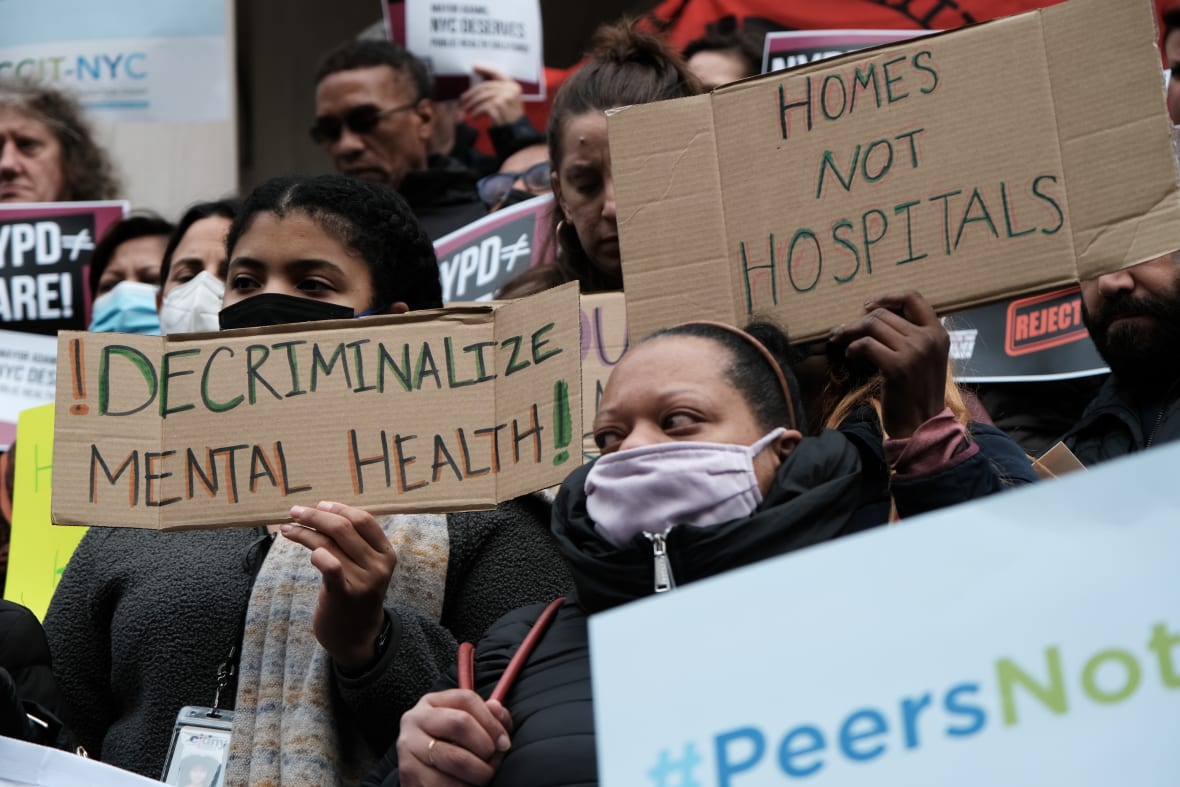As more cities turn to forced hospitalizations for mentally ill, experts say it doesn’t address real problem
New York City will be using first responders, including police officers, to enforce a state law that allows them to commit a citizen experiencing a mental health crisis to a hospital — even against his or her will.
The recent plan to remove mentally ill people off the streets of New York City has garnered mixed reactions. Mayor Eric Adams announced the plan last month as part of a goal to “stop the decades-long practice of turning a blind eye towards those suffering from mental illness.”
The city will be using first responders, including police officers, to enforce a state law that allows them to commit a citizen experiencing a mental health crisis to a hospital — even against his or her will. More often than not, these citizens are homeless.
On one side, proponents are celebrating the move as a smart strategy to get those suffering on the streets some help. On the other side, local advocates and community groups heavily criticize it.
The mayor’s office did not respond to a request for comment about the new policy.

“The plan in New York is unfortunately misdirected. There’s no discussion on housing in any of the mayor’s public statements and there’s no evidence of targeted housing being made available,” says Barbara DiPietro, senior director of policy for the National Health Care for Homeless Council. “That’s really the crux of the concern. It puts the whole onus on a hospital stay and hospitals are being put in the middle of a problem that they can’t solve.”
The New York state law permits police officers to “take into custody any person who appears to be mentally ill and is conducting himself or herself in a manner which is likely to result in serious harm to the person or others.” This law was already on the books, but the concern with this new announcement is that it centers and empowers police officers to enforce it.

A strange thing happened on the subway …
As a result of the concerns, a group of lawyers and community organizations united and challenged the plan in court on Dec. 8, asking a federal judge to stop its implementation. The city attorney recently said no one has yet been taken off the streets as a result of the new strategy.
Black Americans face homelessness at a much higher rate than any other group in the country, making up 40% of the homeless population. These initiatives are focused on people experiencing mental health crises, but most of them are homeless and have nowhere else to be other than the streets.
Over the past couple of years, there has been a significant increase in mental health issues and homelessness across the country. As a result, more cities and states are turning to the same kind of measures Mayor Adams is using. In California, Gov. Gavin Newsom signed a law similar to the one in NYC. It would permit authorities to force treatment on homeless people suffering from certain mental health crises.
Lawmakers in Florida have been trying to reform an old law that would allow them to involuntarily hospitalize people struggling with mental illness. Tennessee has taken it a step further and made homeless camps a felony. Many other cities have passed anti-homeless and anti-camping laws.
But experts say these plans and initiatives don’t tackle the real problem. “We’ve tried this before. It does not work because we have not addressed the structural issues that cause homelessness,” Donald Whitehead, the executive director of the National Coalition for the Homeless says. “It’s a lack of housing, a lack of healthcare and healthcare disparities that drive this.”
These initiatives focus only on getting people off the streets but not on ensuring that they get the help they need so they don’t end up back on the streets, advocates say. “Even if you do round up people and put them in a mental health institute at some point they have to be released, and when they’re released there’s nothing to provide them,” Whitehead says.
There are always concerns about using law enforcement to get people off the streets. In the case of New York, Adams has said police officers won’t be the only ones carrying out the plan. All first responders will be getting “enhanced training” to handle those situations with caution and compassion.
But Adams’ plan offers no specifics about the training. From a national perspective, some argue that the use of armed officers to handle homeless people who are struggling with mental health issues falls under a trend of criminalizing that population, which has been happening nationally over the past few years. “It’s encampments sweeps. It’s arresting people for just existing when they have really no real options,” DiPietro explains.
That’s a sticking point for many advocates and experts who assert that these plans are more focused on getting homeless people out of sight. There’s not enough of a distinction between homeless people and citizens struggling with severe mental health issues. “You’re removing people because you want to just get them out of the way,” DiPietro says. “It feels like the veneer of doing something without any substance of doing anything.”
At the same time, those who study this issue closely understand the nuances. They do not believe that the alternative should be to just leave people out on the streets if they’re not a threat to anyone else. They believe that involuntary hospitalizations have a role to play — but only in the most extreme and egregious cases — because they are not a panacea.
The problem with involuntary hospitalization is that in public statements, city leaders and lawmakers are describing it as method on which they will increasingly rely, which can potentially lead to violence against the homeless and mentally ill population.
“If the problems that we’re presumably concerned about is the existence of people with mental illness experiencing homelessness on the street, then these solutions don’t solve that problem,” Whitehead says.
People on the ground in New York say it’s unclear how much the plan has been implemented. A handful of advocates heard about the plan from the media. There are also reports that the NYPD was not aware that police officers would be involved in the initiative before the announcement and felt “blindsided” by it.
“Mayor Adams continues to get it wrong when it comes to his reliance on ineffective surveillance, policing and involuntary transport and treatment of people with mental illness,” Jacquelyn Simone, the policy director for the New York City Coalition for the Homeless, said. “Mayor Adams needs to focus on repairing our broken mental health system and prioritize bringing access to quality voluntary care and affordable, permanent housing with support services to New Yorkers who need it the most.”
That’s exactly what experts have stressed that cities must do nationally. There should be more of an emphasis on supportive housing and ongoing healthcare services for people living on the streets and dealing with serious mental health issues.
“It’s not rocket science. It’s a model that has been demonstrated to work very well,” DiPietro says. “We’ve got a mountain of research showing that. But it’s a political will issue of whether we invest in it.”
TheGrio is FREE on your TV via Apple TV, Amazon Fire, Roku, and Android TV. Please download theGrio mobile apps today!











